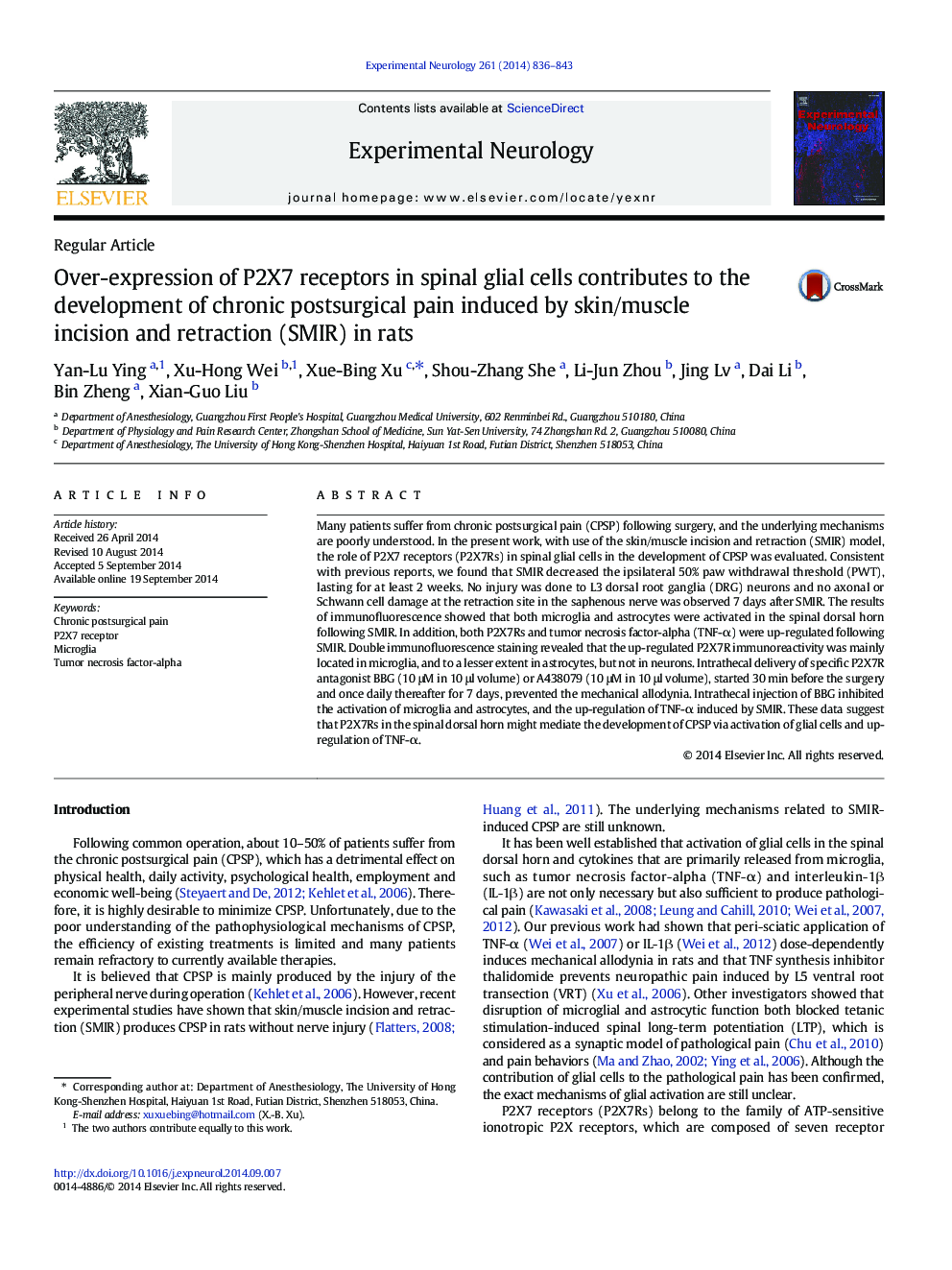| Article ID | Journal | Published Year | Pages | File Type |
|---|---|---|---|---|
| 6017741 | Experimental Neurology | 2014 | 8 Pages |
â¢CPSP is possibly not a consequence of direct injury of peripheral nerve.â¢Glial P2X7R activation and TNF-α production participates in the CPSP formation.â¢Antagonism of P2X7Rs might be a good strategy for prevention of CPSP.
Many patients suffer from chronic postsurgical pain (CPSP) following surgery, and the underlying mechanisms are poorly understood. In the present work, with use of the skin/muscle incision and retraction (SMIR) model, the role of P2X7 receptors (P2X7Rs) in spinal glial cells in the development of CPSP was evaluated. Consistent with previous reports, we found that SMIR decreased the ipsilateral 50% paw withdrawal threshold (PWT), lasting for at least 2 weeks. No injury was done to L3 dorsal root ganglia (DRG) neurons and no axonal or Schwann cell damage at the retraction site in the saphenous nerve was observed 7 days after SMIR. The results of immunofluorescence showed that both microglia and astrocytes were activated in the spinal dorsal horn following SMIR. In addition, both P2X7Rs and tumor necrosis factor-alpha (TNF-α) were up-regulated following SMIR. Double immunofluorescence staining revealed that the up-regulated P2X7R immunoreactivity was mainly located in microglia, and to a lesser extent in astrocytes, but not in neurons. Intrathecal delivery of specific P2X7R antagonist BBG (10 μM in 10 μl volume) or A438079 (10 μM in 10 μl volume), started 30 min before the surgery and once daily thereafter for 7 days, prevented the mechanical allodynia. Intrathecal injection of BBG inhibited the activation of microglia and astrocytes, and the up-regulation of TNF-α induced by SMIR. These data suggest that P2X7Rs in the spinal dorsal horn might mediate the development of CPSP via activation of glial cells and up-regulation of TNF-α.
